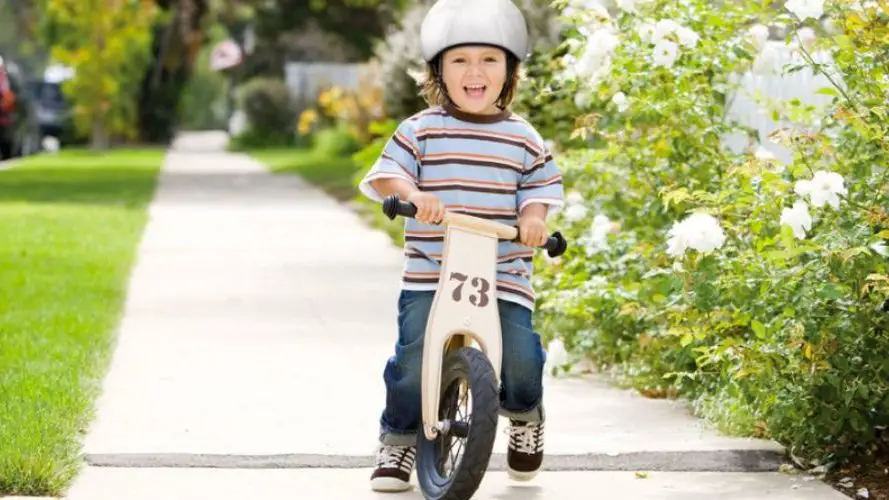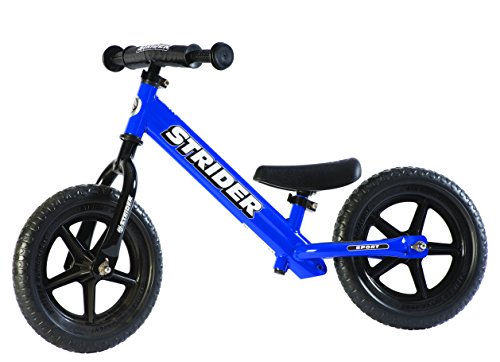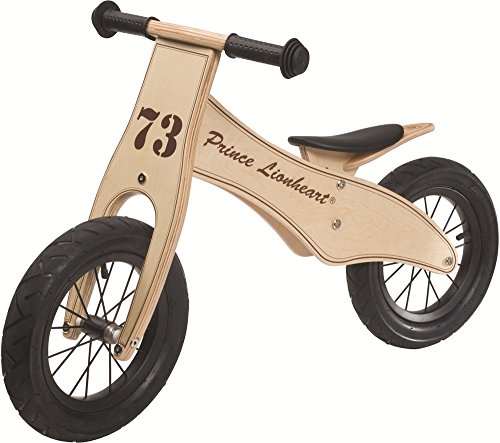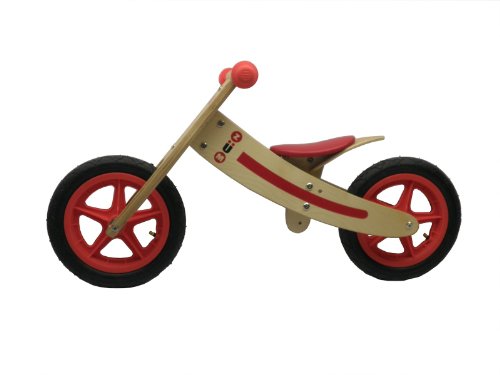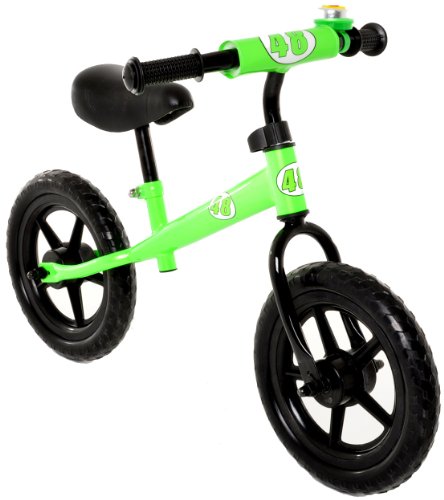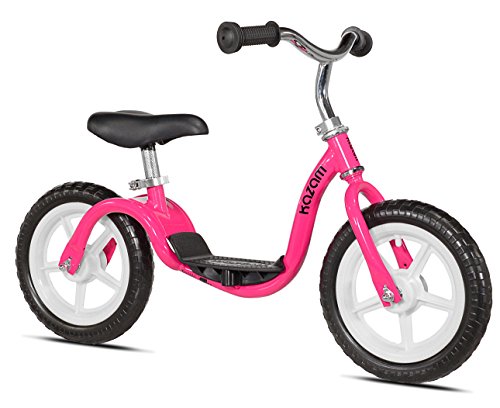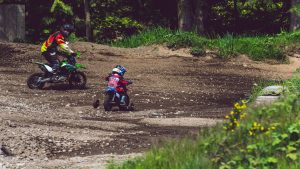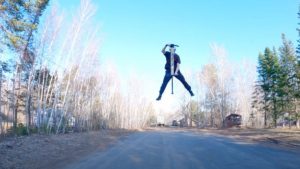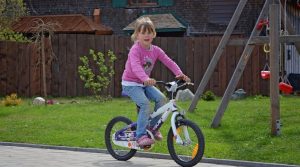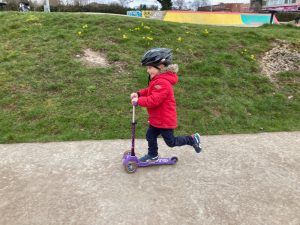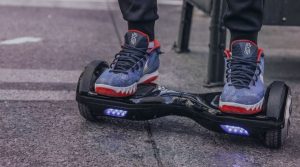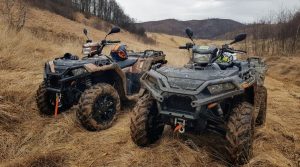Long before any of us ever took the keys to the car and drove off down the street, we were learning how to ride bikes. Bikes gave us that first taste of vehicular freedom, not to mention plenty of adventures with our friends.
Since we all want our kids to have the fun experiences and independence that bikes provide, why not start teaching them early? Tricycles and training wheels have their places in childhood, but, when it comes to preparing your tot to one day ride a real bicycle, balance bikes are where it’s at.
Balance bikes for toddlers help develop the skills that will enable them to peddle off on their own. Unlike tricycles or training wheels, which function more as a crutch than a learning tool, balance bikes teach your child to watch where they are going, how to steer, coasting skills, and, of course, to balance. All in all, they are simply the best way to prepare your child for that future big-kid bike.
But of all the balance bikes on the market, which one is best for your child?
Parent guide and buying tips
How old does my child need to be in order to begin using a balance bike, and does their size matter?
Choosing age-appropriate toys for our kids is one of the many ways we can keep them safe. For your child to ride on a balance bike safely, they need to be at least 18 months of age. They should then, generally, have the strength, balance and coordination necessary to use a balance bike properly and with minimal risk.
It’s important to note that, while some balance bikes market themselves as being able to span the full age range of children who use them, it’s unlikely that both a toddler and an older child will be able to comfortably and safely use the same one. Smaller children need their feet to touch the ground, while larger children need to extend their legs, not squat. This means that balance bikes need replacing as the children grow, though some picks with adjustable seats can provide continuous safe use.
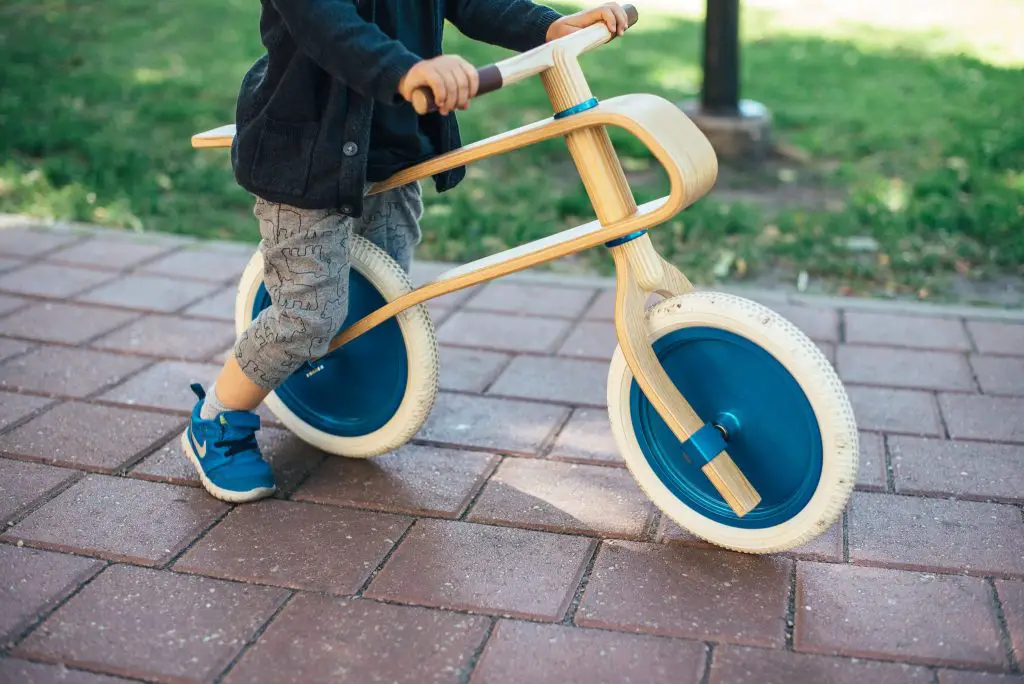
Why is adjusting the seat height of my toddler’s balance bike important, and how can I determine the best position for their seat?
As with a regular bicycle, the seat height of a balance bike needs to correlate with your child’s height to determine where their feet go when they sit on the bike’s seat. The purpose of a balance bike is for children to learn the movement, steering and balance required to maneuver a real bicycle, and, in order for that to occur, their feet need to touch the ground with their knees bent just slightly.
If the seat/height position is incorrect, kids won’t get the full benefit of their balance bike and will be less likely to be comfortable or to ride safely. Therefore, stick with picks that have a seat that can be adjusted to a range of positions. Determining the correct height for their seat may seem challenging, but, for the sake of accuracy, simply measure their inseam and subtract between 1 and 1.5 inches. What’s left should be the height position you need, allowing them to reach the floor with ease.
How does tire size affect my child’s use of their balance bike, and what size tires should I look for?
Balance bikes are popular toys for a broad range of younger kids, meaning there can be size variance that parents should be aware of. One place this tends to arise is with the tires.
Some balance bikes have tires as small as 10 inches in diameter, making them a less than stellar pick for your toddler to grow into. Though great in the beginning, as kids grow, the smaller wheel size makes them less safe. The average balance bike tire is about a foot in diameter, a great size for kids from 18 months to five years. Combined with an adjustable seat, you’ll have a pick that won’t need swapped out as they grow.
What type of balance bike tires are available, and how will they affect my toddler’s experience with their toy?
Like any wheeled vehicle, a lot of your child’s riding experience on their balance bike will be determined by the type and quality of the tires. Tires can vary from model to model, so it’s best to know a little bit about what’s available before you start shopping. We took a closer look at some of the most popular balance bike tire types to help give you some insight into which kinds are the most functional in use.
Air tires: Standard air tires are easier to fill, though a bit heavier than some other picks. This means they add more weight to the bike, but also provide good cushioning while riding, with a greater capacity for traction, regardless of the terrain..
EVA foam tires: These picks are slightly cheaper than air tires, the flip side of the financial windfall being a lighter-weight tire that’s less able to provide as much cushioning as an air tire. They can grip pavement well, so are great for riding in the neighborhood, but smoother surfaces and rugged terrain might find EVA foam tires struggling to stay stable. An upside of these less durable picks is that, since they’re made from foam, there’ll be no flat tires!
Rubber tires: Sturdy and dense, rubber tires also won’t deflate. They’re better picks when it comes to traction thanks to their natural ability to grip, but offer less cushion, so small collisions may create a bit more of a shock. As with air tires, they can add more heft to the toy.
Hard plastic: These are a tire style we don’t recommend unless being used exclusively indoors. The wheels are very light, making the bike easier to transport, but add no comfort or cushioning to your child’s ride and are especially inferior when providing a safe amount of traction on outdoor terrains.
Why is the weight of my toddler’s balance bike important, and how do I choose a bike that’s the proper weight?
As your toddler grows and develops, it’s important that the toys they play with can be operated safely and with relative ease. The weight of a balance bike can make a big difference in how suitable it is for your child. Balance bikes that are too heavy are difficult for growing toddlers to maneuver, and the best rule of thumb is to make a pick that weighs no more than 30% of your toddler’s body weight. This will enable them to zip around as intended.
What are turning limiters, and is it important that they be present on balance bikes?
If the concept of a turning limiter is new to you, let us give you a quick rundown before we go any further. Turning limiters are features which allow parents to limit the degree to which handlebars can be turned to a range that’s typically around 20 to 30 degrees. This prevents extra sharp turns that may be the unintentional result of trying to maneuver their balance bike, and can sometimes prevent a fall.
Differing schools of thought exist when it comes to whether (or not) a turning limiter should be used. Some parents feel that limiting their children’s ability to steer negates some of the benefits of balance bikes by reducing the child’s ability to learn how to steer it. Others prefer them as a safety precaution, especially for younger children. They don’t essentially make a balance bike safer, but, if you’d feel more comfortable using a turning limiter, such an option is available.
Related: The 6 Best Kids Wagons to Buy in 2021
What are the pros and cons of balance bikes and three-wheeled scooters?
Balance bikes
PROS
- Steering can be easier to understand: The steering mechanism of a balance bike is more straightforward and easier for kids to grasp, especially when compared to the steering mechanism of three-wheeled scooters, which requires them to lean in order to change direction.
- They can rest their feet a bit: Kids can coast, if desired, with their feet up while using balance bikes – while, with scooters, their legs are always in action, which can be tiring for younger kids.
- They prepare kids for the feel of a real bike:Balance bikes are a great way to prep them for the feel and experience of real bike riding compared with the significant ‘crutch’ of tricycles and training wheels.
CONS
- They don’t normally feature brakes: Whereas brakes add an element of safety to any wheeled toy, balance bikes don’t usually come with hand brakes. Instead, they rely on children to use their feet to stop. Naturally, if their seat height is positioned correctly, this should be easy for them to accomplish.
- They’re heavier and bulkier than scooters: While scooters tend to be slimmer and lightweight, balance bikes are a bit bulky and can weigh more than their counterparts. This makes them less travel-friendly and a poor pick for hilly areas where they may need to be carried.
Three-wheeled scooters
PROS
- They’re lightweight and store easily: Three-wheeled scooters tend to have sturdy but lightweight metal frames and are collapsible for carrying or storage, making them simple to transport.
Can be better picks for hilly terrain: Because hilly terrain usually requires carrying or wheeling a bike or scooter uphill, the slimmer and lighter frame of a scooter makes it an ideal choice.
Riding a scooter provides exercise to multiple muscle groups: Scooters are great picks for getting full-body cardiovascular and strength exercise, encouraging kids to create their own speed and power.
CONS
- The learning curve for steering is a bit steeper: Because kids need to lean to steer their scooter, some may find it a bit more challenging than learning on a balance bike. Though becoming easier with time, will feel comfortable with practice.
- Can be hard to introduce after a balance bike: While younger kids can get really ‘attached’ to their balance bike, they may prove less interested in three-wheeled scooters. Partly, this is because riding a scooter can be more difficult and physically intensive, though practicing together with them while introducing the scooter outside could certainly encourage them towards making the change.
Related: 17 Reasons Scooters Make Kids Healthier, Happier and More Confident
Now that you know a few tips on what to look for in a toddler’s balance bike, let’s move on to some of our picks.
Our picks of the best balance bikes for kids
Best metal-framed balance bikes
Common materials used in balance-bike frames are aluminum alloys and steel. Aluminum alloys are lightweight, rust-resistant, and usually come with a higher price tag. Though steel is more affordable, it can be heavier and prone to rust if not stored properly.
Top pick
Our opinion
Despite having a steel frame, this balance bike is exceptionally lightweight at under 7 pounds. It has EVA foam tires, rubber grips, bumpers on the handlebars to keep those little hands safe, and comes with two seats so the bike can “grow” with your child.
A well-known name in balance bikes, Strider certainly delivers with their sport model. It has a padded seat for extra comfort, requires no tools to adjust the height of the handlebars or seat, and comes with a built-in footrest.
Ages: 18 months – 5 years
Seat heights: 11 – 19 inches (taller heights require switching to the included XL seat post)
Maximum child weight: 60 lbs
Our second choice
Our opinion
While this aluminum balance bike may look and feel robust, it weighs just 4 pounds. The lightweight design greatly reduces the potential for painful falls and mishaps. It’s air-free foam tires provide ample underfoot traction without the need for frequent maintenance. Since the seat and handlebars can be adjusted, the bike is suitable for a wide range of children who are just getting used to pavement racers.
There’s no need to worry about its unboxing, as Bixe bikes come partially assembled with an adjustment wrench included. Tamper-proof clamps prevent children from accidentally loosening the bike’s hardware. It’s aluminum foundation is coated in an element-defying white paint and spackled with an assortment of funky Bixe logos. Choose between blue, green, pink, or purple accents.
Ages: 18 months – 9 years
Seat heights: 11 – 18 inches
Maximum child weight: 60 pounds
Best wooden balance bikes
As more people try to shrink their carbon footprint, renewable materials are a selling point in all sorts of products, wooden balance bikes being no exception.
Our third choice
Our opinion
The birch wood that makes up this frame is sourced from an FSC approved forest. Just bear in mind that, at 10 pounds, it is slightly heavier than its metal-framed counterparts.
This balance bike comes with 12-inch, air-filled rubber tires and the seat is adjustable so that the bike can “grow” with your child. The handlebars have handle grips for a secure hold and a rubber bumper to protect your tot’s hands should they bump into anything on the sides.
Because this bike’s frame is 100% birch wood, be sure to store this bike indoors out of the elements.
Ages: 18 months – 5 years
Seat heights: 14.8 to 17 inches
Maximum child weight: 65 lbs
Our fourth choice
Our opinion
Here, we have another frame made from sustainably harvested birch wood. Like the above product, you will want to keep this bike safely stored away from the elements.
The ZÜM CX has a turning limiter, which is either a pro or a con depending on which side of the argument you fall on. The tires are air-filled rubber, and the handle grips come with a bumper to protect your little one’s hands.
At about 7 lbs, it is reasonably lightweight. By taking the bike apart and reassembling it in “grown-up” mode, you have an affordable balance bike that “grows” with your child.
Ages: 2 – 6 years
Seat heights: 12 – 14 inches (“low rider” mode) / 15 – 17″ (“grown-up” mode)
Maximum child weight: 50 lbs
Best affordable balance bike
Although many balance bikes can seem costly for a family on a tight budget, there are still some affordable quality ones that will teach your toddler the valuable skills that prepare them to ride a real bicycle one day.
Our fifth choice
Our opinion
At under $50, this product doesn’t have a lot of features, but will comfortably help teach your tot the basics of balancing.
Though the frame is steel, the bike is still quite lightweight, while the handlebars sport rubber grips and bumpers.
Some parents feel that the 12″ foam-filled tires lack traction on certain surfaces, nevertheless, the bike is easy to assemble and comes with an adjustable seat and handlebars.
Ages: 2 – 3 years
Seat heights: 15.5 to 17.5 inches
Maximum child weight: Not specified
Our sixth choice
Our opinion
This balance bike appeared on the show, Shark Tank, which is a pretty fun thing to tell your tot!
It has a built-in footrest, EVA foam tires that won’t puncture, and is designed to help your child find their natural center of gravity while learning to balance on two wheels.
Some parents consider the paintwork to be subpar and easily scratched on this toy, but, if you’re on a tight budget, it’s certainly a balance bike worth considering.
Ages: 2 ½ to 5 ½
Seat heights: 14 – 17.5 inches
Maximum child weight: Not specified
Wrapping up
A good balance bike will put your toddler ahead of the game when it comes to learning how to ride a real bicycle. Furthermore, they’ll have a blast tooling around the yard or driveway while learning those valuable coordination skills, providing you with loads of fun memories to last a lifetime. So strap on your little one’s helmet and watch their delight as they take their first steps towards adventure and independence!


